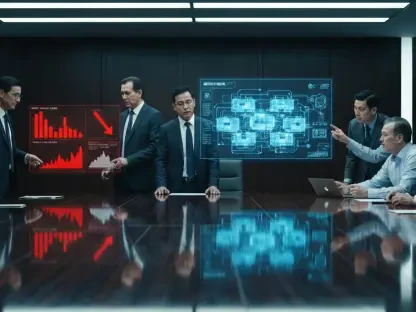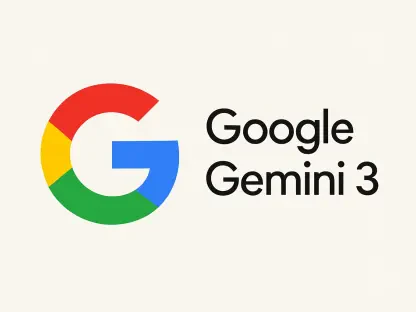Amid the relentless pursuit of creative excellence, AI technology has emerged as a transformative force in visual content creation, redefining traditional methods and reshaping creative landscapes. Its rapid advancements have penetrated diverse fields, fundamentally altering how content is conceived, executed, and distributed. This transformation expedited visual content production, streamlining processes that previously demanded extensive time and resources. As AI tools gained prominence, they began to wield significant influence in branding and marketing, seamlessly integrating into strategies designed to capture and retain consumer attention. Echoing in the corridors of advertising and design, the power of AI-driven creativity now underpins compelling storytelling, producing visually arresting promotions that resonate with audiences. At the crossroads of innovation and efficiency, AI tools facilitated a new era in content creation, marking a departure from conventional practices and ushering in unprecedented opportunities.
The Power of Customization and Personalization
AI tools unleashed a new dimension of customization and personalization in visual content creation, enabling brands to craft tailored imagery that embodies their identity while resonating with target audiences. Through advanced capabilities, these tools offered creators a palette of possibilities, allowing them to fine-tune aspects such as color schemes, textures, and intricate design elements. By providing granular control over visual aesthetics, AI technology endowed marketers and designers with the ability to produce unique imagery that aligns seamlessly with brand narratives and marketing goals. In turn, this facilitated a deeper connection with consumers, enhancing brand recall and engagement. Customization options empowered brands to maintain a consistent visual dialogue, ensuring that every image generated reflects the essence of corporate values, missions, and ethos.
Moreover, AI’s capacity for personalization granted creators the freedom to adapt visuals to dynamic campaign requirements, ensuring relevance and timeliness. Whether running seasonal promotions or launching product-specific advertisements, personalized image generation became a strategic tool in maximizing impact and fostering consumer engagement. Additionally, AI-driven personalization promoted iterative design, wherein creators can experiment with variations to optimize visual effectiveness before release. This dynamic approach curtailed the need for extensive manual revisions, optimizing workflow and expediting content delivery. As AI tools continue to evolve, the prospects for enhanced customization and personalization expand, offering brands a competitive edge in the saturated digital marketplace.
Integration into Creative Workflows
Integrating AI technology into established creative workflows revolutionized content production, introducing efficiencies that enhanced both output quality and productivity. As AI tools embedded seamlessly into existing processes, they eliminated bottlenecks associated with manual execution, enabling creators to focus on strategic and artistic undertakings. These technologies streamlined labor-intensive tasks such as image editing and rendering, automating components that typically languished under human oversight. Consequently, designers and marketers could delegate routine tasks to AI, reserving their expertise for more nuanced aspects of the creative process. This symbiosis between AI and human talent redefined production landscapes, propelling creative teams to achieve their goals with increased efficacy and precision.
The practical benefits of incorporating AI into workflows extended beyond sheer efficiency, engendering a paradigm shift towards more structured and cohesive production environments. With AI’s algorithmic contributions, tasks such as quality control and content management could be orchestrated with greater consistency, cultivating uniformity across multiple projects and campaigns. Invariably, AI’s ability to generate high-quality, business-ready visuals enriched creative outputs, driving the standard of excellence and innovation. As industries look towards future endeavors, the incorporation of AI within workflows becomes indispensable, steering creative teams toward new heights of achievement and expression. Whether for small start-ups or multinational corporations, AI’s presence in workflows continues to augment creativity while alleviating operational constraints.
Leading AI Image Generators
Pioneering the transformation in visual content creation, several AI image generators lead the charge with innovative features and capabilities tailored to diverse user needs. Depositphotos AI Image Generator, for instance, gained recognition for its capacity to produce polished, business-ready visuals integral to branding and marketing efforts. Through its integration with Creative Suite API and VistaCreate, this tool extended a suite of customization options that empowered users to fine-tune their images according to precise creative visions. The availability of extensive libraries, offering stock images, videos, and illustrations, further enriched possibilities, enabling creators to craft compelling and varied content effortlessly.
Stable Diffusion emerged as a preferred choice for individuals possessing technical expertise, offering flexibility and customization through its open-source platform. Renowned for its ability to produce highly detailed and lifelike visuals, Stable Diffusion caters to tech-savvy users willing to delve into model adjustments and parameter control. Despite its complexity, the tool’s support for offline operation on local machines provided reliability and accessibility, favored among creators seeking autonomy. Additionally, its inpainting and outpainting functionalities allowed users to modify elements while preserving consistency, an asset for brands adhering to rigorous guidelines.
Conversely, Google’s ImageFX focused on text-to-image generation, translating verbose textual descriptions into vivid imagery through sophisticated language models. While it lacked supplementary editing instruments found in other tools, ImageFX capitalized on precision, ensuring outputs align with specific descriptions. This capacity for accuracy fostered professional-grade results crucial for business applications and promotions. With continuous development overseen by Google’s resources, ImageFX anticipated ongoing refinement, reflecting a commitment to improving users’ creative experiences through enhanced interpretations.
Advanced Language Models and Their Impact
Advanced language models employed in text-to-image AI tools reshaped content creation practices, enhancing the precision and accuracy of visual interpretations derived from narrative inputs. Through sophisticated algorithms, these models deciphered the nuances of textual descriptions, converting abstract ideas into concrete visual expressions. ImageFX stands at the forefront of this advancement, utilizing advanced language models to bridge the gap between verbal articulation and visual representation. By precisely generating imagery aligned with detailed textual parameters, ImageFX sharpened the fidelity of content creation, allowing designers and marketers to convey complex concepts effectively.
The role of language models extended beyond mere conversion, promising advances in content richness and diversity. By interpreting extensive vocabulary and idiomatic expressions, AI tools expanded the horizons of visual representations, capturing subtle nuances that enhance storytelling and engagement. This detail-oriented approach ensured creations possessed depth and context, attributes pivotal in capturing consumers’ attention in a saturated media landscape. As language models progress, their scope in facilitating sophisticated narrative-driven content increases, empowering creators to explore new dimensions of expression and thematic depth.
Moreover, the reliability and versatility of language models promise applications beyond marketing and entertainment. Their deployment in educational resources, interactive media, and cultural interpretations showcase AI’s potential to enrich user experiences across multifaceted domains. Ensuring accuracy and alignment between text and visuals becomes paramount, with AI-driven models advancing content coherence and enhancing viewer comprehension. As users harness these technological capabilities, they usher in a future characterized by compelling and visually resonant communications.
Trends and Best Practices
Staying abreast with emerging trends in AI-driven visual content production is integral for creators aiming to maintain competitive relevance and maximize impact. Key among these trends is the emphasis on customization, allowing brands and designers to tailor prompts and outputs to align with desired creative expressions. This element of personalization emerged as a pivotal aspect, enabling content generation to reflect and reinforce brand narratives with authenticity and nuance. Coupled with customization, an emphasis on integration and user-friendly design facilitated smoother inclusion of AI tools within existing workflows, amplifying efficiency and fostering creativity.
Adopting best practices in leveraging AI-generated content enhances creative output, ensuring brand messaging remains consistent and resonant across audience touchpoints. One such approach advocated organizing prompts and images systematically, preserving coherence and consistency across projects. Additionally, refining prompts through AI-assisted text generators improved the clarity and specificity of descriptions, fostering an accurate translation of vision into tangible imagery. Establishing a quality control workflow ensures generated visuals align with prominent brand characteristics, upheld through rigorous scrutiny before launch.
As creators navigate these trends, continued exploration and adaptation become vital. Innovations in AI and developments in image generation serve as catalysts, propelling the industry toward new paradigms and untapped opportunities. By integrating emerging practices, creators can harness the full spectrum of AI capabilities, crafting content that captures attention, imagination, and emotion. This dynamic landscape calls for proactive engagement, encouraging brands and designers to embrace AI’s ever-expanding potential.
The Path Forward for Content Creators
AI tools have revolutionized the way visual content is customized and personalized, allowing brands to create imagery that truly reflects their identity while engaging with their target audiences. These tools provide creators with a broad range of capabilities, letting them fine-tune various elements like color schemes, textures, and complex design details. By giving marketers and designers detailed control over the visual aesthetic, AI technology enables the production of unique images that fit brand stories and marketing objectives. This connection enhances consumer engagement and boosts brand recall by ensuring that every generated image reflects the company’s mission, values, and essence.
Additionally, AI’s personalization capabilities allow creators to tailor visuals to meet the changing needs of various campaigns, such as seasonal promotions or product-specific ads, ensuring their relevance and timeliness. This adaptability reduces extensive manual revisions, streamlining workflow and speeding up content production. As AI tools progress, they offer brands new possibilities for optimization, giving them a competitive edge in a crowded digital market.









